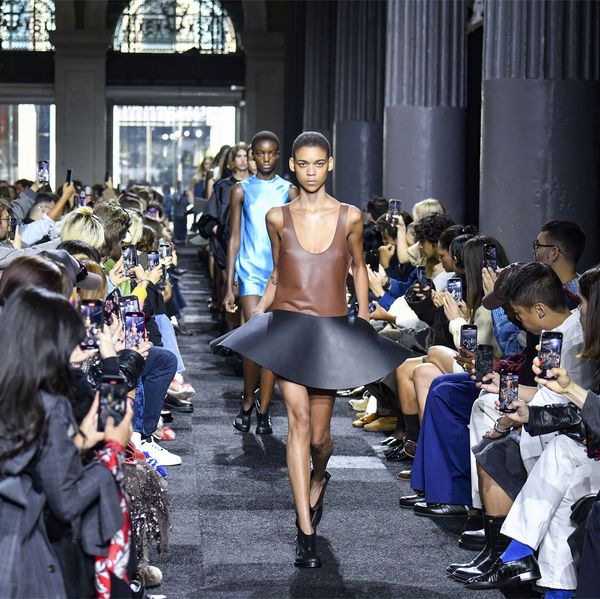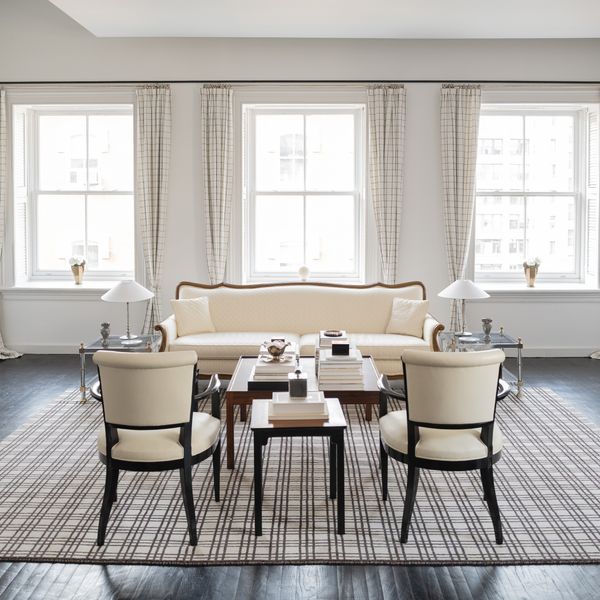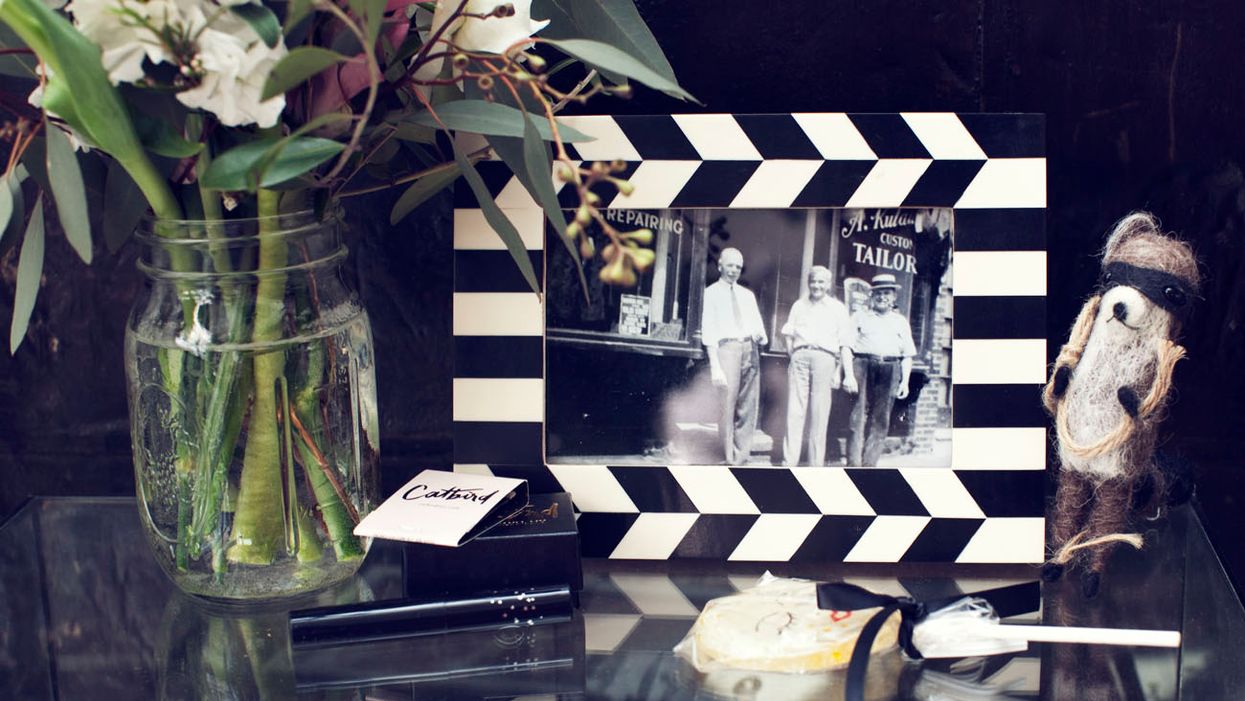
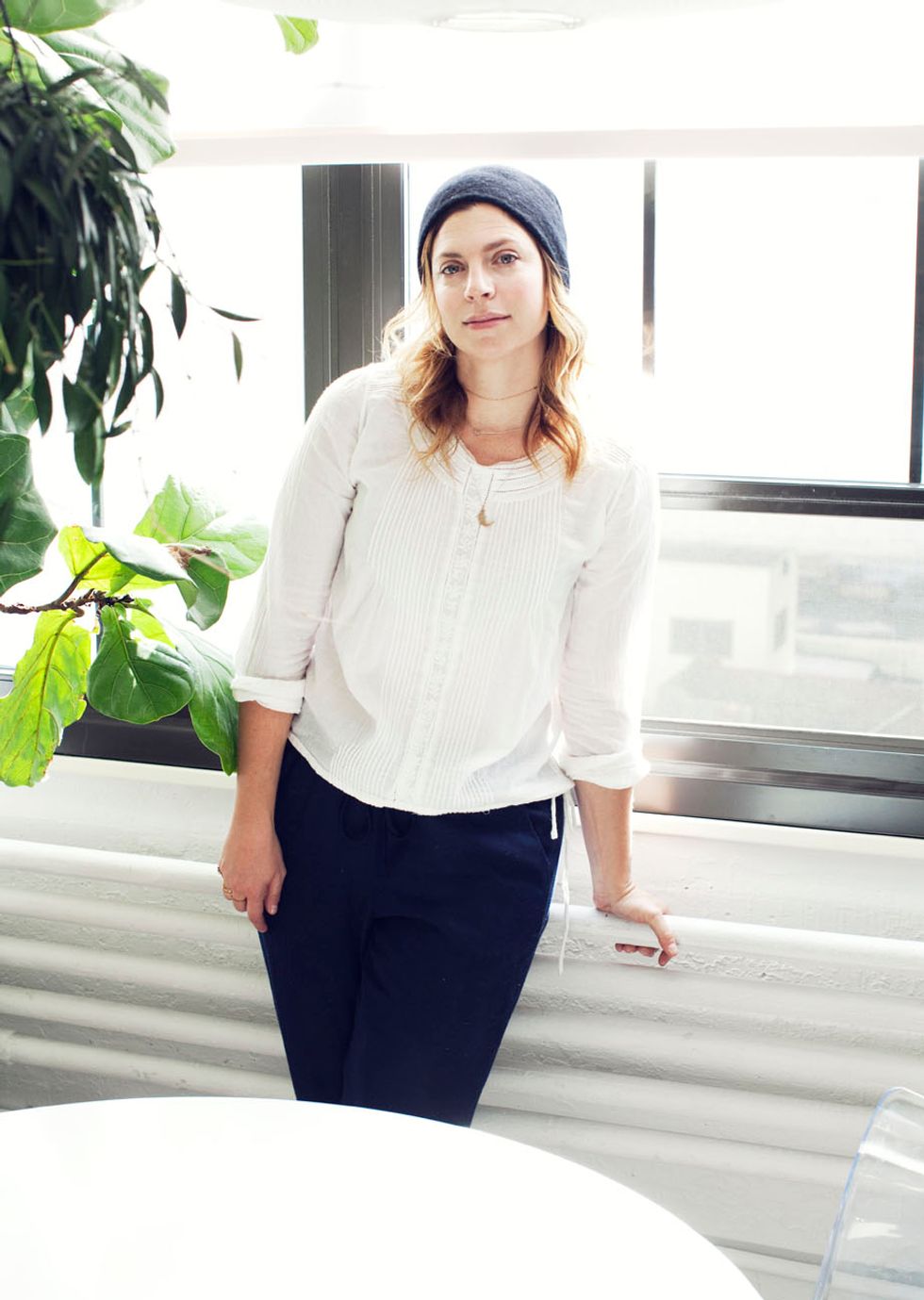
Welcome to Desksides, The Coveteur series in which we sit down with leaders in various creative fields and figure out how they got there. We guess we could've also named this, "how the hell do I get your cool job," accompanied with a "help me I'm poor" GIF fromBridesmaids, but then realized going the mononymous route was a little more succinct.
The reason we've all been stacking and layering delicate, filigreed gold rings on our fingers and knuckles for the couple of years isn’t because some major powerhouse label or jeweler put them on the runway. You can thank Catbird for that—the independent shop in Brooklyn that went from there to everywhere in its own exceptionally organic, totally authentic way. In our continuing mission to figure out exactly how to take over the world one creative venture at a time, we talked to owner Rony Vardi (whose beautiful pictures are also here) and buyer Leigh Plessner about the importance of a physical store in a digital age, the innate pleasure of shopping for jewelry and the ever-confounding challenge of work-life balance.
ON THE ORGANIC BEGINNINGS OF CATBIRD:
Rony Vardi: “I worked as a graphic designer with a bunch of beauty brands; I kind of hopped around for a little while. I opened the store when I was 34 because it was a dream of mine to be in charge of a big project. We all knew that it was going to change and going to evolve but knowing that I was at a place in my life where I could take that big step. I opened the store and like I said earlier, I started with all kinds of stuff but narrowed it down to jewelry over the years. I was wearing this toe ring [on my knuckle] that I bought in East Village, for example in the late nineties, and I literally never took it off. Then once we had a jeweler working for us, I had her start making them for us and that’s kind of how the line started. It was not a very well articulated plan at the time—there was no collection, it was just things that I was wearing, things that I wanted to wear. That’s really how we started in a nutshell and I think that’s really why we put such an emphasis on culture, because that’s kind of how it began. We keep it casual and un-fussy, just make it something you can put on, feel good about and not take off.
When I opened the store, I really sold a wide variety of things; a lot of clothes, a lot of shoes, some elbow patches and jewelry. Jewelry pretty quickly became the thing I loved the most. I loved buying it, I loved working with jewelers, I loved selling it—it just really took over. The one thing I realized, also, is that no one is really ever in a bad mood when they’re buying jewelry. Really, truly, we see people buy jewelry all the time and it’s generally a very pleasant experience. Choosing between selling jeans and selling jewelry was a pretty seamless task. Jewelry is such a personal, satisfying purchase, so that became our expertise pretty quickly. The store is so tiny, so it was very difficult to envision really emphasizing anything else other than small jewelry. Also, at the time when I first opened, there was such a burgeoning jewelry making community in Williamsburg. All these super talented people would come visit the store and we would chat and we would look at things together and talk about design and prices. They would even hangout at the store and customers would come in. It was just this on-going conversation—a real, true community. Some of those jewelers even ended up working at the store. It happened very naturally, all of that. And also the fact that I’ve always loved jewelry ever since I was little and would go to Express and buy jewelry on a fishing line and wear it for years on end.”
"Sometimes removing something is equally or even more powerful than adding something new. We can’t do all things, be all things, so I’d way rather us just do Catbird as best as we can.”
-Leigh Plessner
ON FALLING IN LOVE WITH JEWELRY:
Leigh Plessner: “For as long as I can remember I have a vision of my grandmother and my great aunt’s jewelry and playing with my mother’s jewelry—especially in temple—examining every detail of it when I was supposed to be listening to the rabbi’s sermon. I met Rony when I had a stationery line and she was a customer of mine—when she opened the store on Bedford I jumped at the chance to get out of my house and, over time, working with her and jewelry and jewelers, and eventually a really wonderful team, was just about the most fun and exciting and exhilarating work I could have dreamed of. It is just way more fun to work with jewelry and to work with a team of people and not work from home [laughs].”

ON HOW CATBIRD WENT FROM AN IN-STORE LINE TO A WHOLESALE SENSATION:
RV: “It was only our actual store for a really long time actually. I think the first time someone had asked [about wholesale], it had literally never occurred to me. It was never part of the plan, but then, overtime, it became a really healthy part and a really healthy way to think about who we are as a brand. First the store, then the line and then wholesale, in that order.”
LP: [It used to be that] the majority of the jewelry that we sold from our own line was because all of us would wear it around the store and women would come in and see it. It was really word of mouth. People would go, ‘Oh, what’s that? What’s that little ring you’ve got on the tip your finger?’ I remember one day, a grandmother from Ohio, came to the store specifically to buy herself her first knuckle ring. She knew which one she wanted, she knew which metal she wanted—she had this all planned out in advance. That felt like a real turning point moment that felt like, ‘Oh my gosh, this is not an accidental thing that happened while she was visiting here.’ She had screenshots! Also, it was really exciting because it wasn’t our usual demographic at that time. That felt like things had rippled out from our little pocket of the world and that’s really exciting.”
ON WHAT MAKES CATBIRD DIFFERENT:
RV: “It’s really accessible—it’s $44, essentially. We do go less than that, but you can buy yourself a thin, simple, solid gold ring that will last and that you don’t have to take off for $44. It will look beautiful on it’s own, or it can be the starting point of a stack, and that, to me, is very friendly and accessible. For me, in my twenties, that is exactly what I wanted and where I would want to put my money and what would make me feel good. As our customers have grown up and as our neighborhood has changed, you can treat yourself for more money, but the fact that it’s easy and un-fussy… I mean, who wants to be fussy?”
ON HOW THEY CAME UP WITH THE NAME?
RV: “I have an antique Audubon print with Birds of the Northeast on it—and the Catbird is there, looking sassy and cute with it’s tail sticking up. I thought it was a nice name—good sound, nice connotations—but I felt pretty strongly that the store I opened ten years ago could change over time and I wanted a name that was not super specific, but felt good.”
"Something that I came to terms with a few years ago is that balance is not one thing that you achieve and then you’re like, ‘Ah, here it is.’ It’s something that flows along with you—as my life grows, as my business grows, balance is ever changing."
- Rony Vardi
ON THE IMPORTANCE OF THE STORE:
LP: “The store is the lifeblood. We both go there everyday and it is the physical manifestation [of the brand] and I think, and I hope, that if you’re shopping with us online or engaging with us on social media, that you can feel that it all radiates out from there. It’s a real, central voice.”
RV: “I think because we are also an online retailer and a wholesaler and a brand on social media—all those things that are not tangible—having a physical location where someone can come and have that experience in person, I think really differentiates us. I think and hope that it makes people trust us. If you’re going to buy your wedding ring from us, even if you live in Japan and are never going to come here, you know that there’s actual people and an actual ring and it’s really just—I don’t know, there’s a tangible aspect to it that I think enhances trust.”
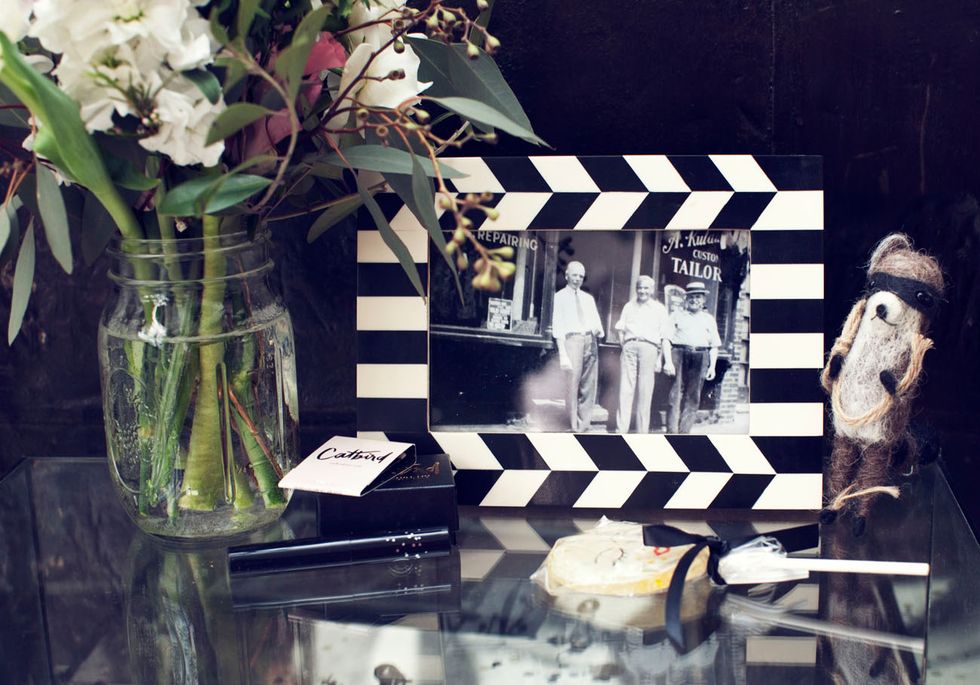
ON THE IMPORTANCE (AND UNIMPORTANCE) OF SOCIAL MEDIA:
LP: “[Social media is] hugely important and it has changed the business. I also think that we built it onto of the foundation that was already there. When I put up the first Instagram photo, it got nine likes. We had already been in business for years at that point. I can’t imagine just launching into that digital world without having experience with the business and our customers. We had already been talking that whole time and tying in the Catbird voice and vision. I think, and I hope that people who engage with us feel the culture that we have built and it really does all come from us. It’s organic: we think really hard about things but it’s not strategized.”
ON THE GROWTH OF ENGAGEMENT AND WEDDING RINGS:
LP: “Engagement and wedding rings have become a really big part of our business that we definitely could not have imagined. There was this one ring in particular I remember. It was under $200. It was gold with a white sapphire that was set in the center. I remember a few times selling it as an engagement ring. We definitely hadn’t thought about it that way and that really kind of lit stuff up—that people who were shopping with us were getting a little bit older and were starting to take the next step in their lives. We have a relationship with them, and them with us, so they came and re-conceptualized their engagement ring as more of an everyday piece to make this really sentimental, beautiful marker of an important life event. It’s from that, too, that we got new customers and now it’s become a really important, substantial part of the business. We opened the Wedding Annex a little under a year ago and it’s just devoted to engagement rings. We offer those in the store as well, so it’s really special to us. We get to have this relationship with people and then they come into the store and then we continue, all of us, on our journey together.”
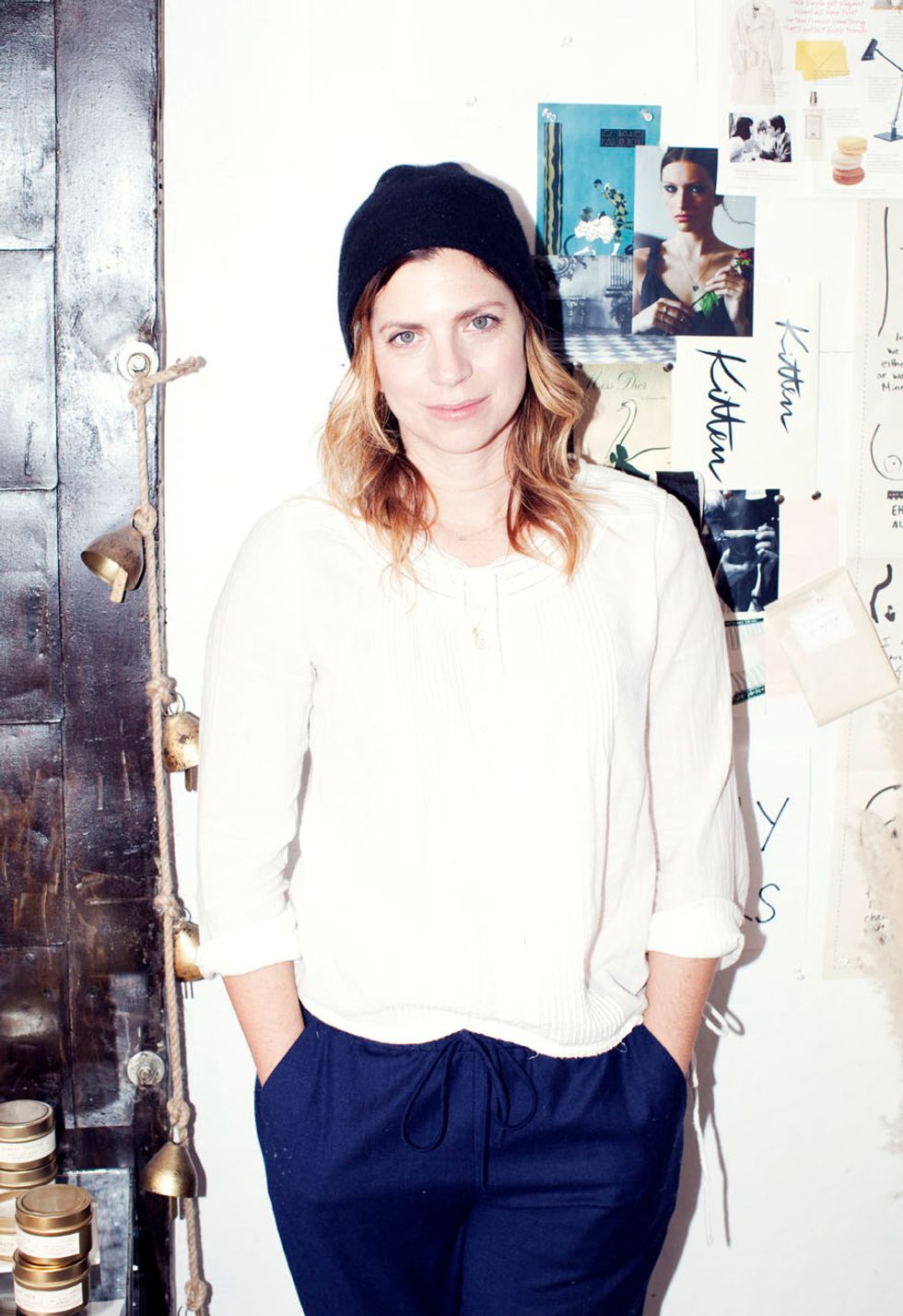
ON WORKING WITH OTHER JEWELRY DESIGNERS:
LP: “Our relationships with our designers are absolutely crucial and really special to us. We’ve worked with a ton of our designers for almost the entire time Catbird has been around. We work really, really, really closely and intimately with them and communicate on a daily basis. I think part of the practical thing that we look for in bringing in these designers is somebody who presents their work in a really thorough, synthesized manner from the get go. Orders online, special orders—everything we’ve been talking about with regards to personal jewelry, engagement rings and wedding bands. Those lifelong commitment to the customer and the relationship we have with the designer who makes it is crucial.”
RV: “Some of the designers have been with us almost the entire time. First, they have to be great designers, but the ones that we have really good relationships with are the ones that are professional and understand that having their jewelry design business is jewelry design and then also business. We have stopped doing business with people who have had stuff that’s sold well and they make beautiful things, but it’s just an impossible task to get your order on time. All the business stuff is a big part of the equation that people forget about. It’s not a glamorous part, but it’s a big part.”
ON THE VALUE OF EDITING AND LETTING GO:
LP: “All the options we have were a real struggle for us. It’s hard to not always want to offer more, but since we do make everything ourselves (as do the designers that we work with), limiting and editing selections really allows us to keep the coffers fully stocked and to fulfill orders and expectations quickly. Equally important, but really hard to do, is letting go of pieces that have run their course. Sometimes removing something is equally or even more powerful than adding something new. We can’t do all things, be all things, so I’d way rather us just do Catbird as best as we can.”
ON LESSONS LEARNED EARLY ON:
RV: “If you treat your business like a side project, that is what it will be, which is super tricky since you often have no choice at the start. When I first started the store I worked at it all the time—while it was open, and while it was closed. Then I panicked a little because, you know, rent, food... and went back to freelance graphic design for a while and paid people to work part time at the store on days that I worked elsewhere. That got very comfortable for me, but I also noticed that my business was just coasting. Not growing. Honestly, I was lucky that it was coasting and not tanking.”
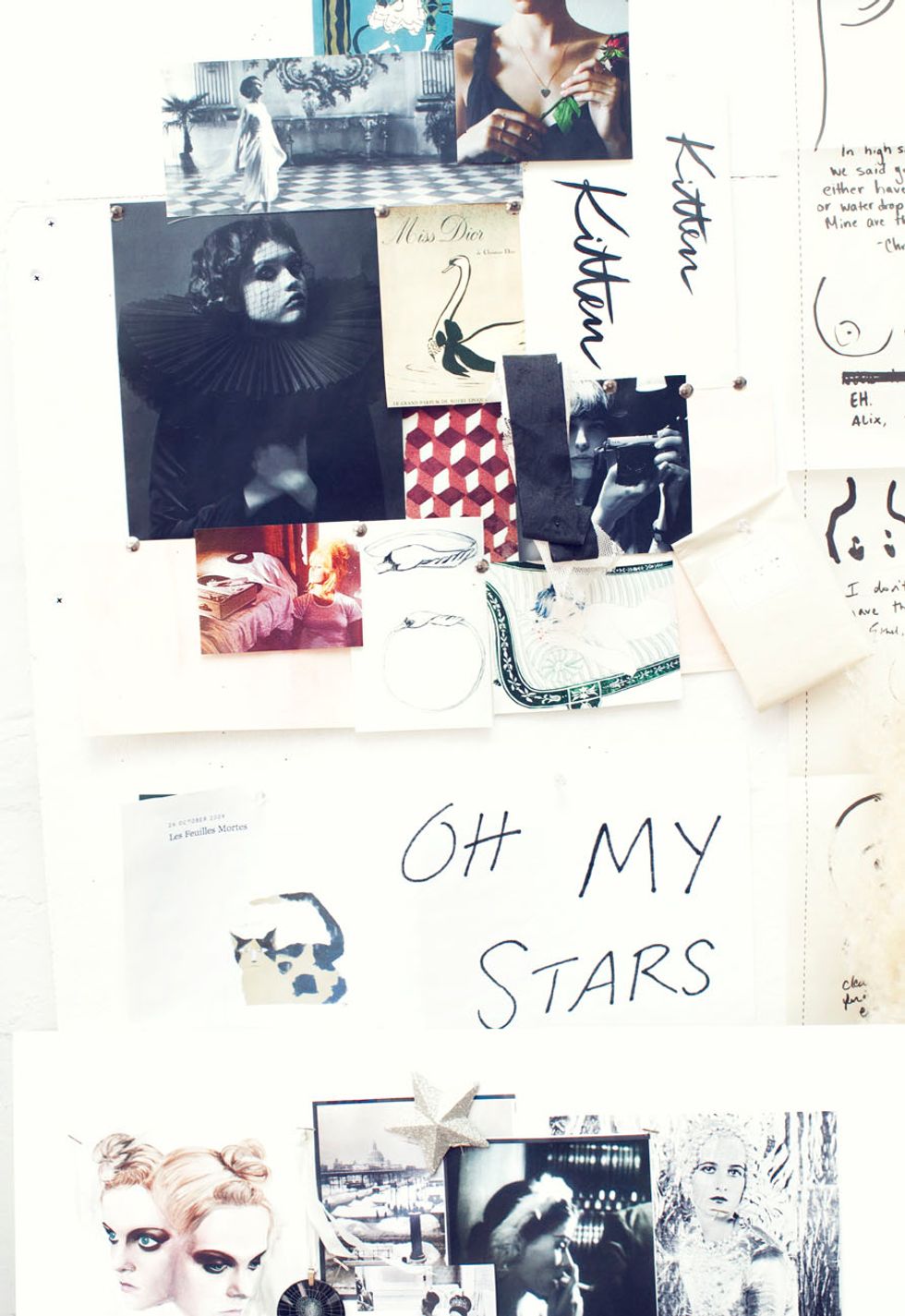
ON THE INEVITABLE CHALLENGE OF A WORK-LIFE BALANCE:
RV: “The biggest challenge for me has always been balancing my family life and my work life, which I think goes for billions of other people. Something that I came to terms with a few years ago, really, is that balance is not one thing that you achieve and then you’re like, ‘Ah, here it is.’ It’s something that flows along with you, you know? I have two kids, so for me it’s as my kids grow and change, as my life grows, as my business grows, that balance is just ever changing. How to figure that out and not get too hung up on it if it’s not perfect and how to isolate what’s off in that balance is really the biggest challenge. I might have a rule, but then I just use my cellphone, so I break my own rules.
About three years ago, my husband quit his job—before that, I was doing my family and my business fulltime and I couldn’t do it. Since then, where I work fulltime, I’m able to now go home and be with my family and take vacations. On the weekends, I can’t really turn myself off business-wise while the store is physically open—that’s a part of me that is on-call—but I also now have 48 people. They’re an absolutely incredible group of people and people I really, really trust, so I’m able to be home, step away from my phone and turn it off a little bit more now.
That, to me, was the biggest challenge, and, in a way, it sort of feels like the biggest personal triumph: to be able to run a business of this size, but still have time for myself personally. Actually, tying into that, that’s actually something that’s hugely important to me as far as the culture of the work here. It’s really important to me that everybody else has that as well—it shouldn’t just be me. Everyone else generally goes home at 6 o’clock, people take vacations, we have summer Fridays. I feel really, really strongly that my staff should have a life outside of work and that if you can’t do your own work during those hours a week and get home at a normal time to be with your family, something is off and needs to be examined. Either management or you’re not quite right for the job. It’s hugely important for me and I also think it’s important for everybody.”
LP: “I’m proud that people can build careers at Catbird. I’m proud of the team we work with. I’m with Rony on the work culture—and that culture informs everything we do. I’m really proud that we have balanced being nice and kind with the hard work and hard decisions that come along with every business. I think that our customers really feel our values of community and kindness and respect, and, in turn, could really not be any more loving and supportive and loyal.”
ON GOOD ADVICE:
RV: “I have kind of a funny story. I saw a truly awful movie called Bottle Shock. It’s about a wine company and the guy who owns the vineyard, the vintner, is walking through the grapevines and he says, ‘The best fertilizer is the owner’s footsteps,’meaning, if it’s your business, you have to be there physically, mentally, emotionally, you have to put yourself into it. The time I saw that movie was around when I was really struggling time wise; I had my two kids and my husband and work, trying to do everything in two hours a day and that line in that astonishingly bad movie, really changed my life. My husband and I starting putting the wheels in motion for him to quit, so that I could devote my time and energy full-time to the business. Honestly, everything changed. Looking back, it was really incredible; the business was growing organically and in a sense, I was able to take a look at the bigger picture. Really everything changed.
One other thing: anybody who is starting out should know that running a business isn’t just about choosing pretty things, even creating and designing. Often times, it’s not even primarily about those things. There is a lot of business and math and, you know, you’re your own plumber, your own janitor, your own sales person; you’re just everything. Those who think they’ve left their office job, you’re be doing exactly the office job as before. That’s what you’ll spend all your time doing. But in the interest of the bigger picture.”

